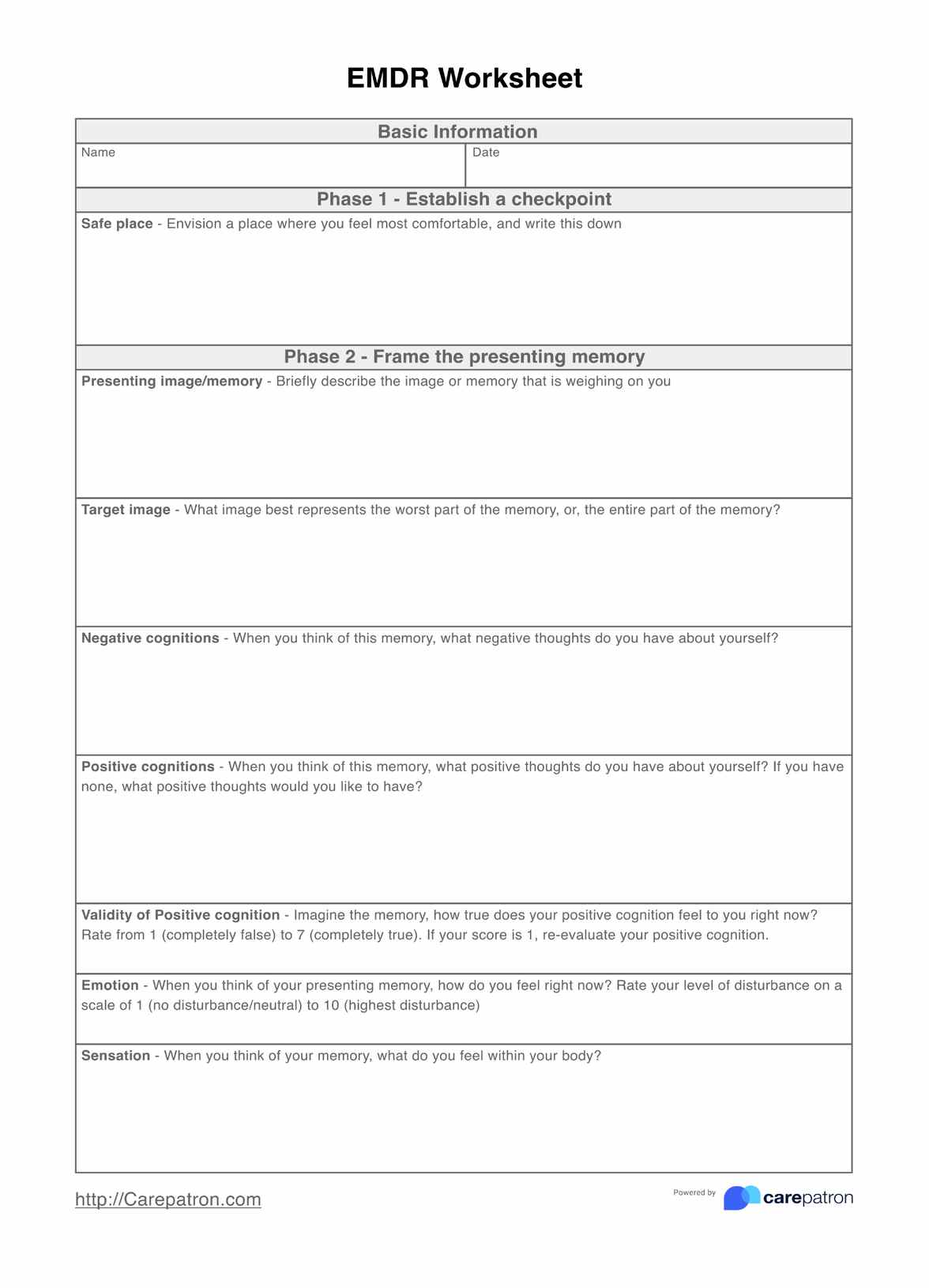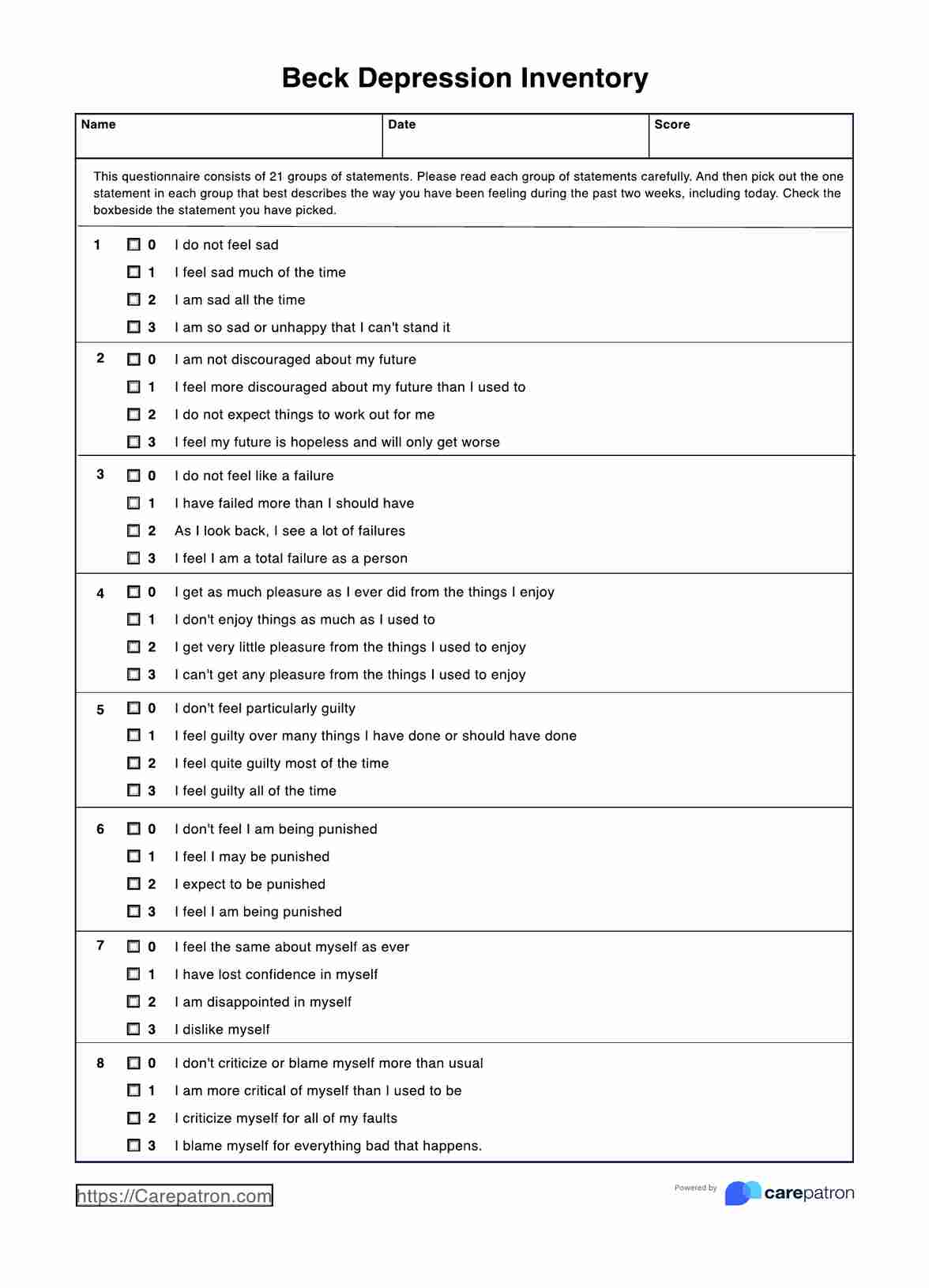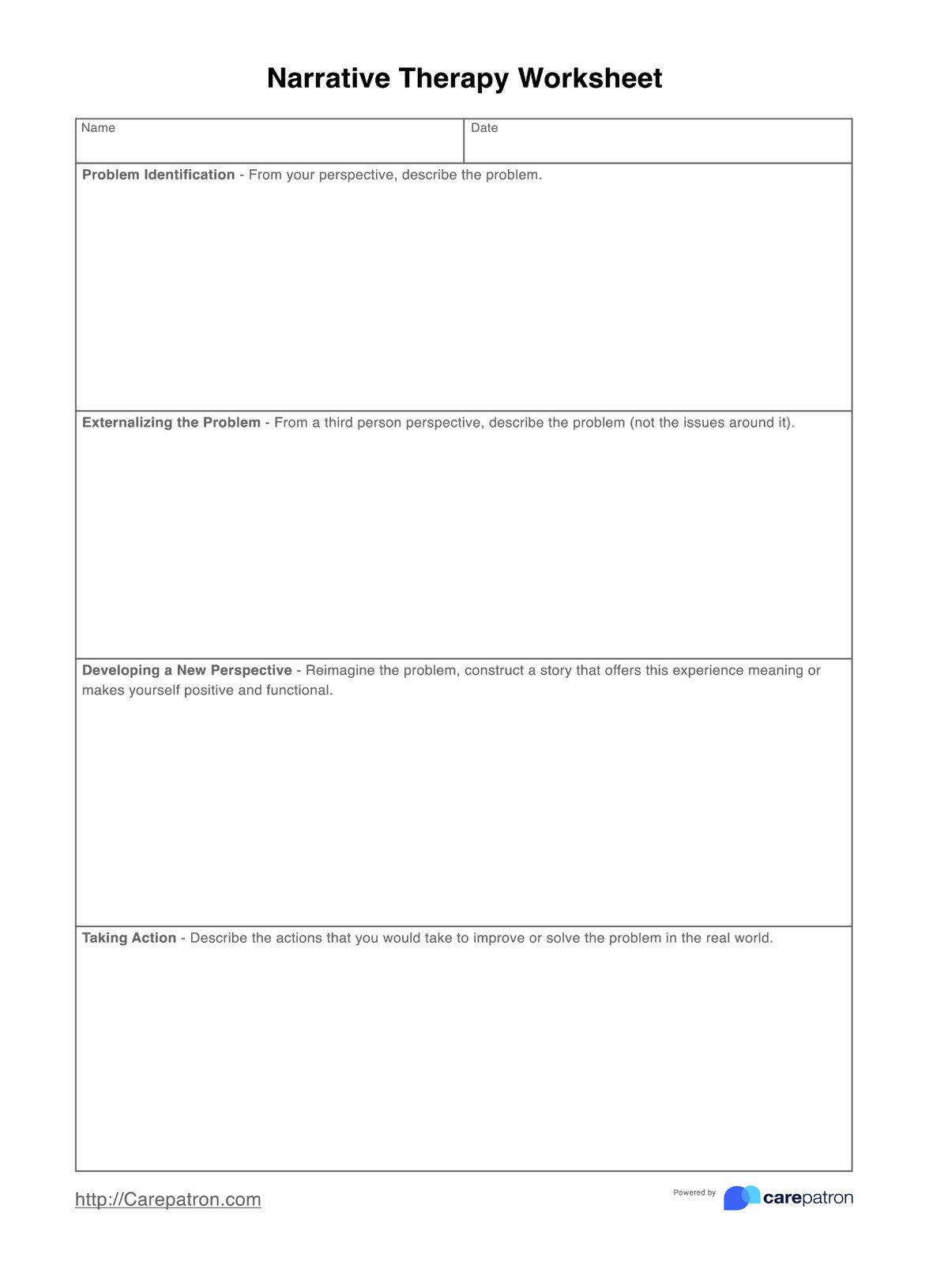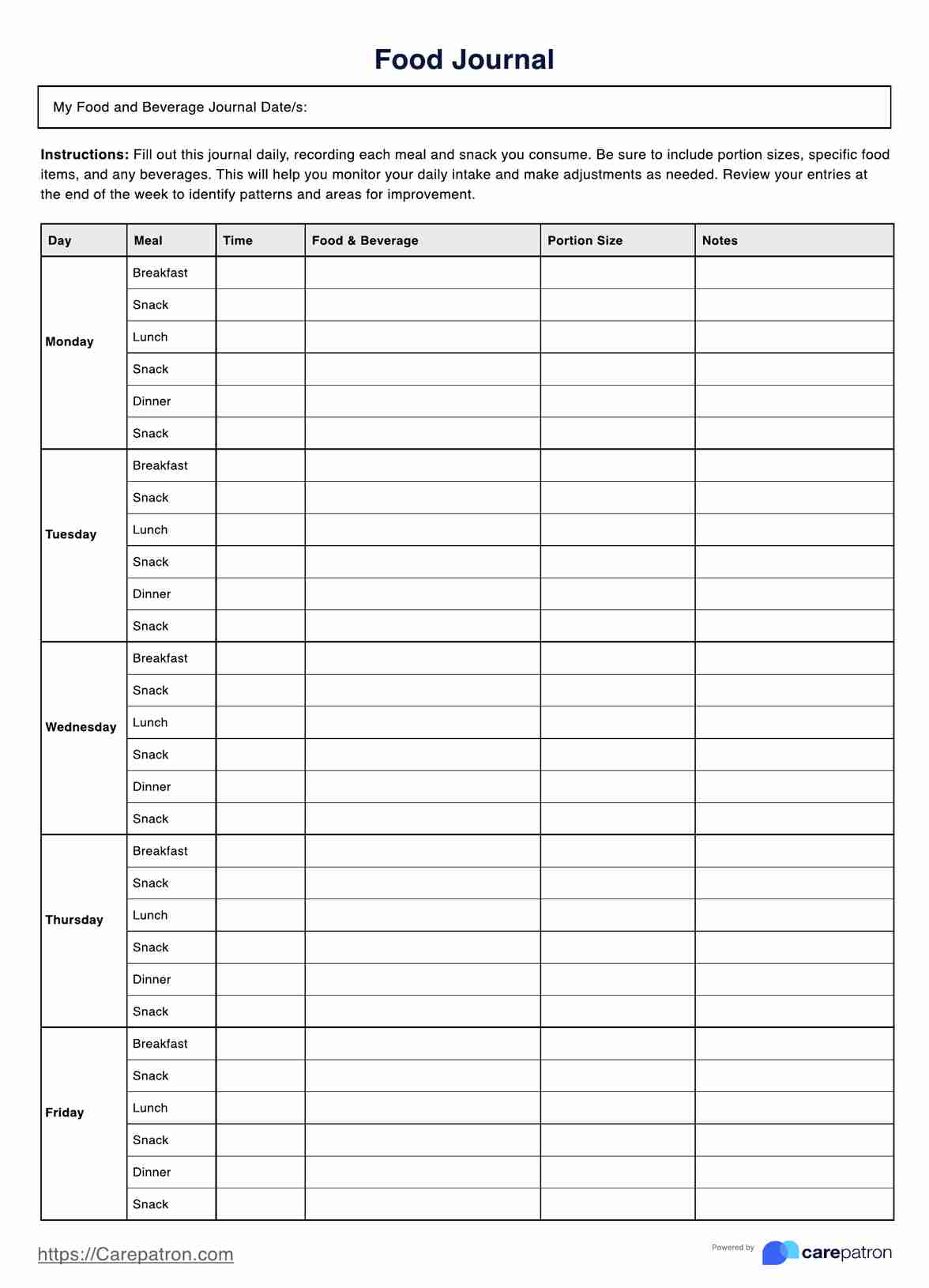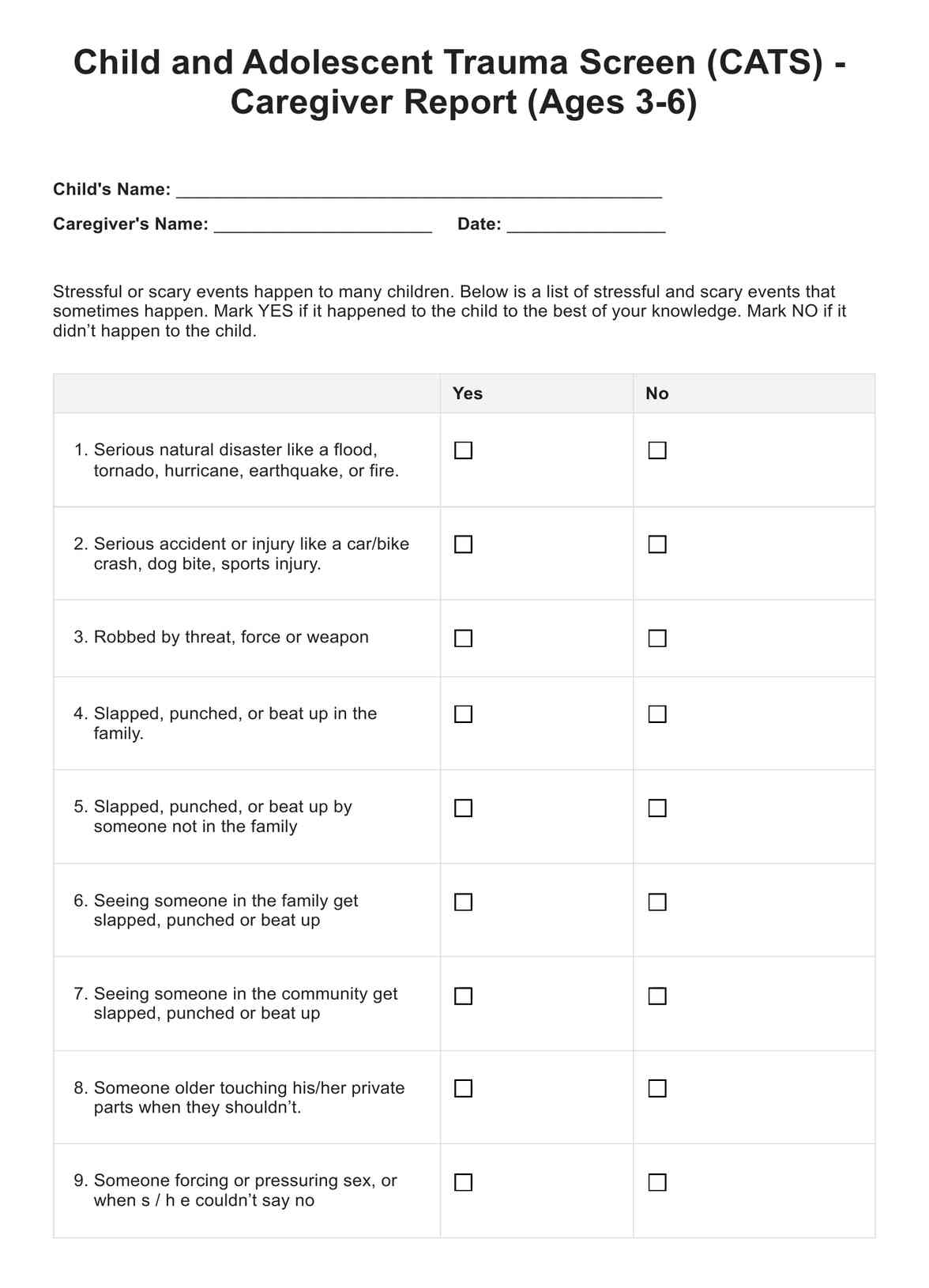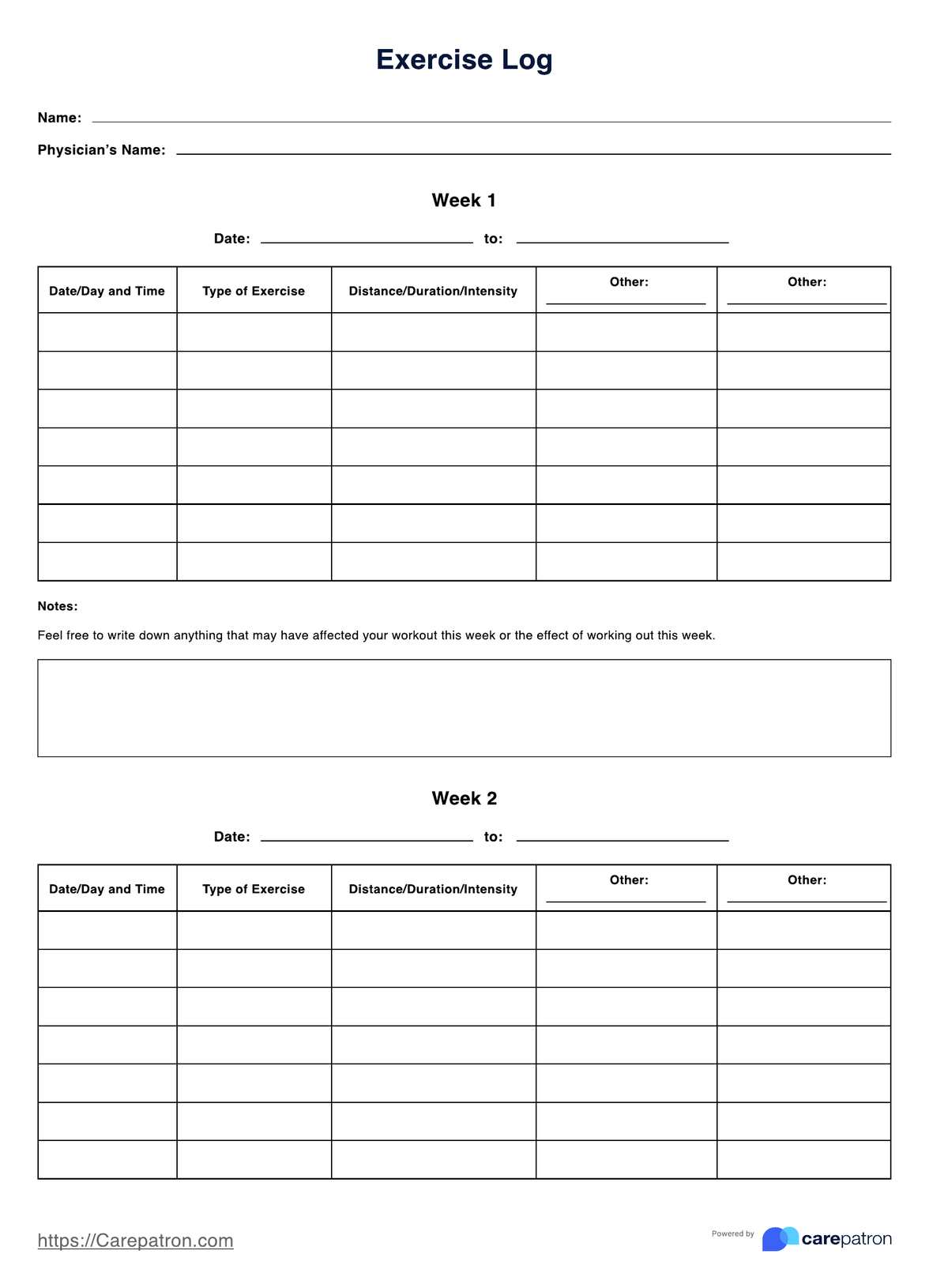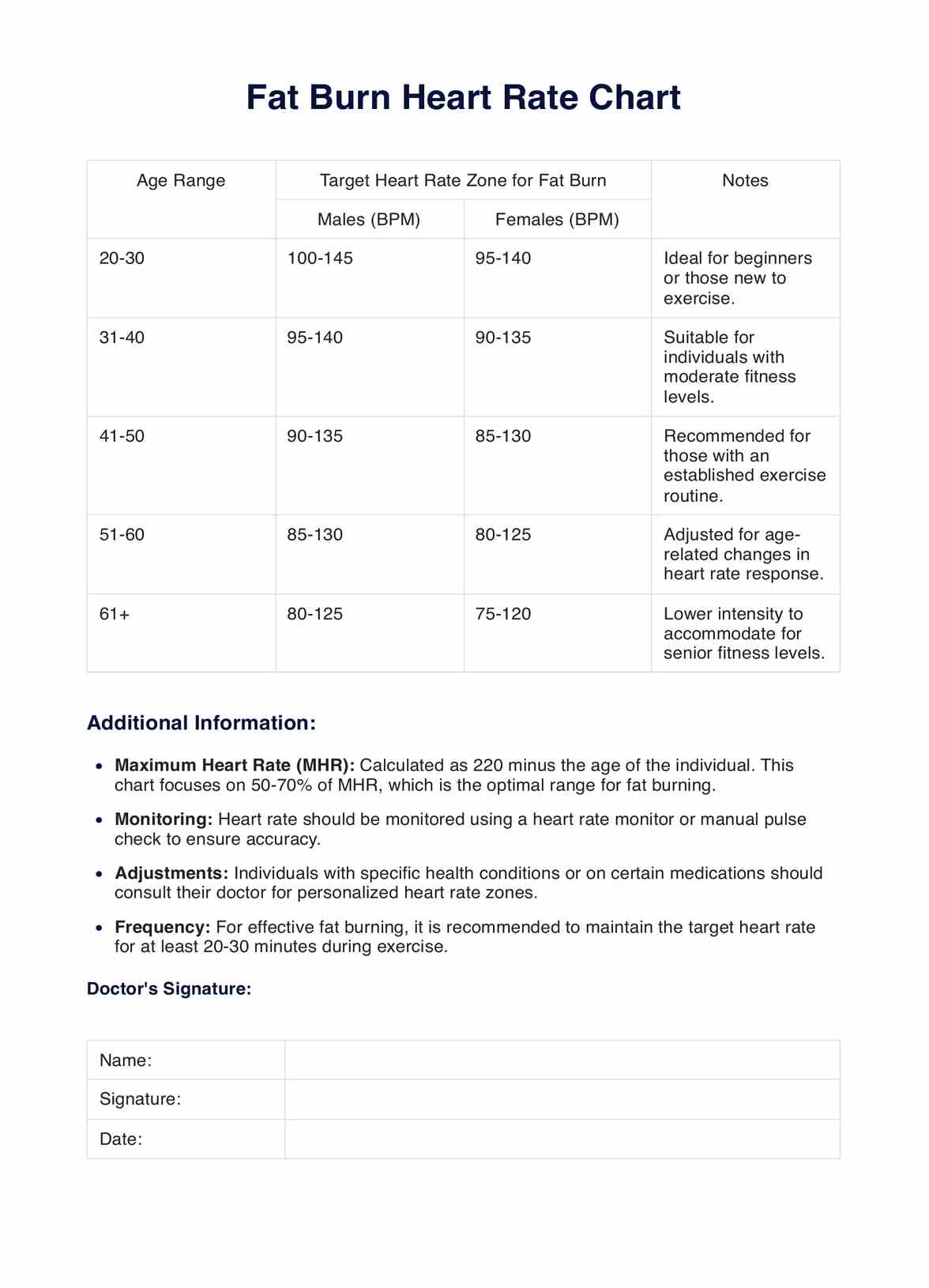Mental Health Symptoms
Explore our Mental Health Symptoms Checklist guide with examples. Download the free PDF to assess and manage mental health effectively.


What Is a Mental Health Symptom Checklist?
A Mental Health Symptom Checklist is a versatile tool that can help therapists collaboratively work with their clients to identify mental health symptoms that may be noticeable or cause distress.
It is important to note that this checklist does not clinically diagnose any psychological disorders or impairments. However, the mental health symptom checklist can be a perfect starting ground for those who may be displaying signs of mental health concerns.
The Mental Health Symptom Checklist can be adapted to identify different aspects of mental health. The checklist may include:
- Mood symptoms
- Cognitive symptoms
- Behavioral symptoms
- Sleep habits
- Psychotic symptoms
- Physical symptoms
The great thing about the Mental Health Symptoms Checklist is that it requires input from the client. The individual knows themselves the best, so they can help identify how severe the symptoms they are experiencing are and be able to answer further questions you may find relevant.
The Mental Health Symptoms Checklist helps mental healthcare professionals plan for possible therapy techniques to use within the sessions and make safety plans if needed.
This checklist is not only limited to mental healthcare practitioners either. Any healthcare professional who deems it relevant to undertake a mental health symptom checklist can use this template.
Mental Health Symptoms Template
Mental Health Symptoms Example
How Does It Work?
This checklist works like any other checklist. Simply identify the symptoms your client has been experiencing and check the box if they are present. Check below to see a step-by-step guide for how to complete the checklist.
Step One: Obtain the Checklist
Navigate the Carepatron website to obtain the Printable Mental Health Symptoms Checklist. You can download the checklist to your device, fill out the form electronically, print it, and complete a paper copy.
Step Two: Explore Mental Health Symptoms With Your Client
You’ll need to explore the possible symptoms your client may be having. It is up to you to determine how to get this information. Some individuals may respond better to being asked blatantly, although some might not respond well to this.
Step Three: Check The Boxes
Regardless of how the information about symptoms is acquired, you will check the boxes to see if they are present or leave the box blank if they are not. There is an empty box at the end of the checklist for any additional notes you consider essential.
Step Four: Results
Interpret the results of the Mental Health Symptoms Checklist. This can be done within the same session if you plan to talk about what could happen for the client then and there. Consider fully interpreting and making additional notes about their symptoms before discussing the results.
When Would You Use This Checklist?
Initial Assessments/Case Conceptualization
During the initial session with a client, it is beneficial to understand what mental health symptoms they may be experiencing. Using this checklist will help therapists gauge where their therapy skills might benefit the client and what therapy techniques may be required moving forward in sessions.
Monitoring Symptoms
Clients in therapy may benefit from frequently undertaking the Mental Health Checklist to monitor their progress within sessions. Often, assessing symptoms can help determine helpful interventions and future treatment plans.
During Other Healthcare Exams
It is important to remember that the Mental Health Symptoms Checklist is not only limited to counseling professionals' use. This checklist can be used in other healthcare exams if the practitioner finds it helpful.
Screening Specific Psychological Concerns
A helpful way that the Mental Health Symptoms Checklist can be utilized is when investigating specific mental health concerns. Whether the client suspects they may be suffering from a specific psychological matter or if the therapist would like some more insight into particular symptoms, the mental health symptom checklist can be used.
Development of Treatment Plans
Having a thorough understanding of the mental health symptoms an individual is living with can help in the development of future therapy techniques as well as treatment plans. Treatment plans can be targeted specifically for the individual to tackle their symptoms directly.
What Do The Results Mean?
A completed Mental Health Symptoms Checklist can produce various results up to the healthcare professional’s interpretation.
Identification of Specific Issues
After completing the Mental Health Symptoms Checklist, counselors can identify specific issues they may need addressing. For example, a client may present with all the symptoms that correlate with generalized anxiety disorder, but further psychological assessment would be necessary to determine a diagnosis.
Baseline Symptoms
If this is an initial assessment, these results can provide an excellent baseline for where the client is sitting with their symptoms. From here, future developments can determine whether current therapeutic options are effective or changes should be considered.
Normative Comparison
These results can be compared to established norms of symptoms. It is important to note that this may require further psychological screening to represent the actual scale of symptoms accurately.
Risk Factors
Results from the Mental Health Symptoms Checklist can identify risk factors that may threaten the individual's current psychological functioning. For example, if a client identifies that they hold feelings of sadness, they might be at a higher risk of detrimental outcomes such as self-harm or suicide. These results can help to determine the next course of action that may be appropriate.
Research & Evidence
Mental Health Symptoms Checklists have been widely used within psychological practice. They have also been incorporated into daily medical practice. According to Alliance (UK) (2016), the first contact for families is their general practitioner, and primary care is responsible for 90-95% of the identification of mental health problems.
However, it is essential to note that licensed mental health professionals do further investigation. This shows that the use of a Mental Health Symptom Checklist is detrimental when it comes to understanding and initially identifying mental health concerns through an assessment.
Various mental health symptom assessment tools have been developed within the psychological discipline. These symptom-screening tools are typically used to diagnose specific mental disorders. An overarching Mental Health Symptoms Checklist can be helpful for those first-point contacts such as general practitioners. Mayo Clinic (2022) also recommends that if an individual has any symptoms of a psychological concern, they should contact their primary healthcare provider.
References
Alliance (UK), N. G. (2016). Identification and assessment of mental health problems. In www.ncbi.nlm.nih.gov. National Institute for Health and Care Excellence (UK). https://www.ncbi.nlm.nih.gov/books/NBK401817/
Mayo Clinic. (2022, December 13). Mental Illness - Symptoms and Causes. Mayo Clinic; Mayo Clinic. https://www.mayoclinic.org/diseases-conditions/mental-illness/symptoms-causes/syc-20374968
Commonly asked questions
Carepatron has already created a general Mental Health Symptoms Checklist that you can access for free using our platform.
Mental Health Checklists can be used in a variety of settings. Therapists, counselors, and mental health professionals may use this checklist during sessions. However, general practitioners, often the first point of contact for mental health concerns, may also decide to use the checklist.
Healthcare professionals use Mental Health Symptoms Checklists to determine if mental health symptoms are present in the individual. They are used collaboratively with the client to decide on persistent symptoms.
Mental health professionals can create variations of mental health symptom checklists to suit their clients. Further, clients can be encouraged to make their own mental health symptoms checklist to determine any mental health concerns.


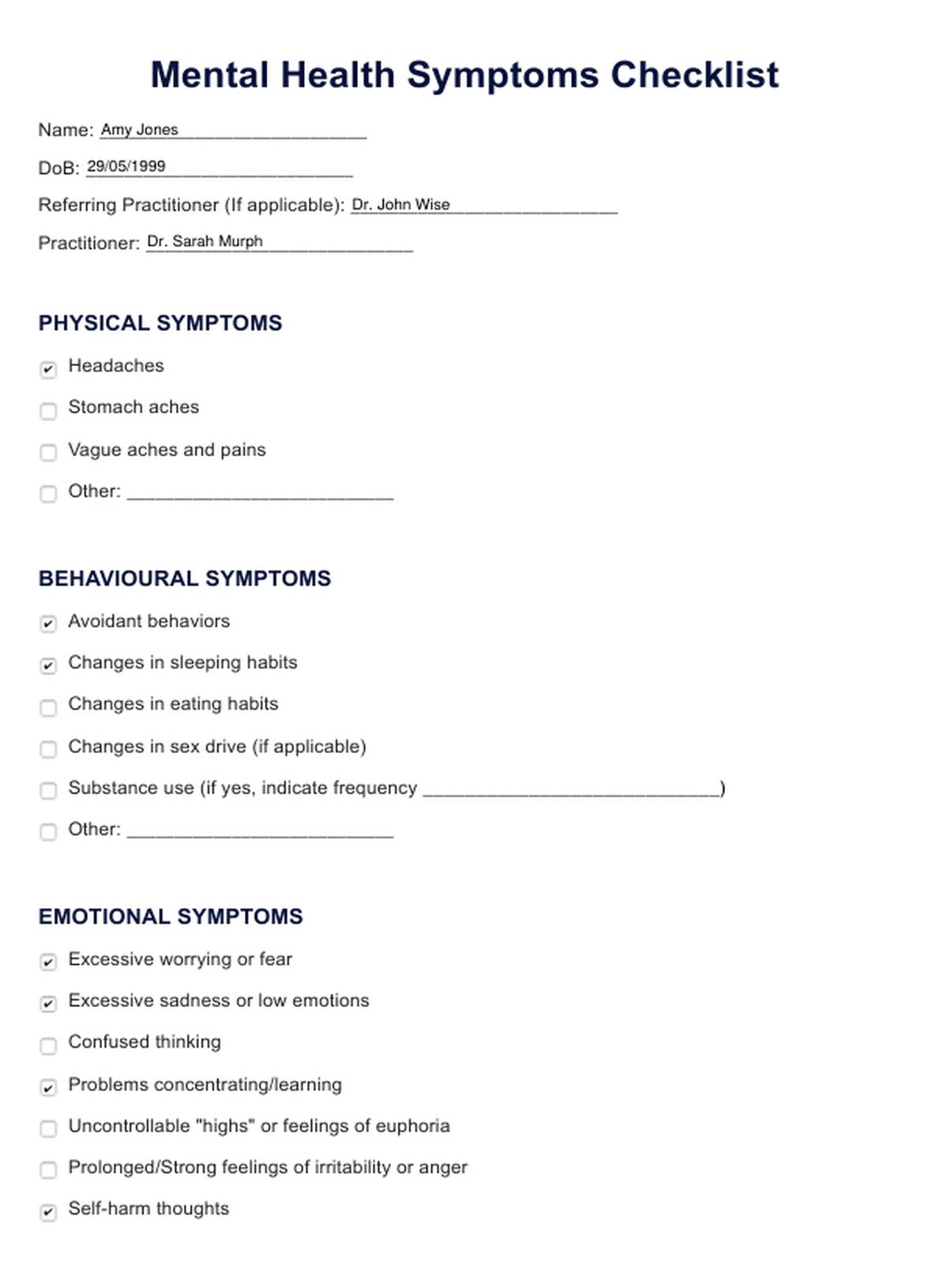

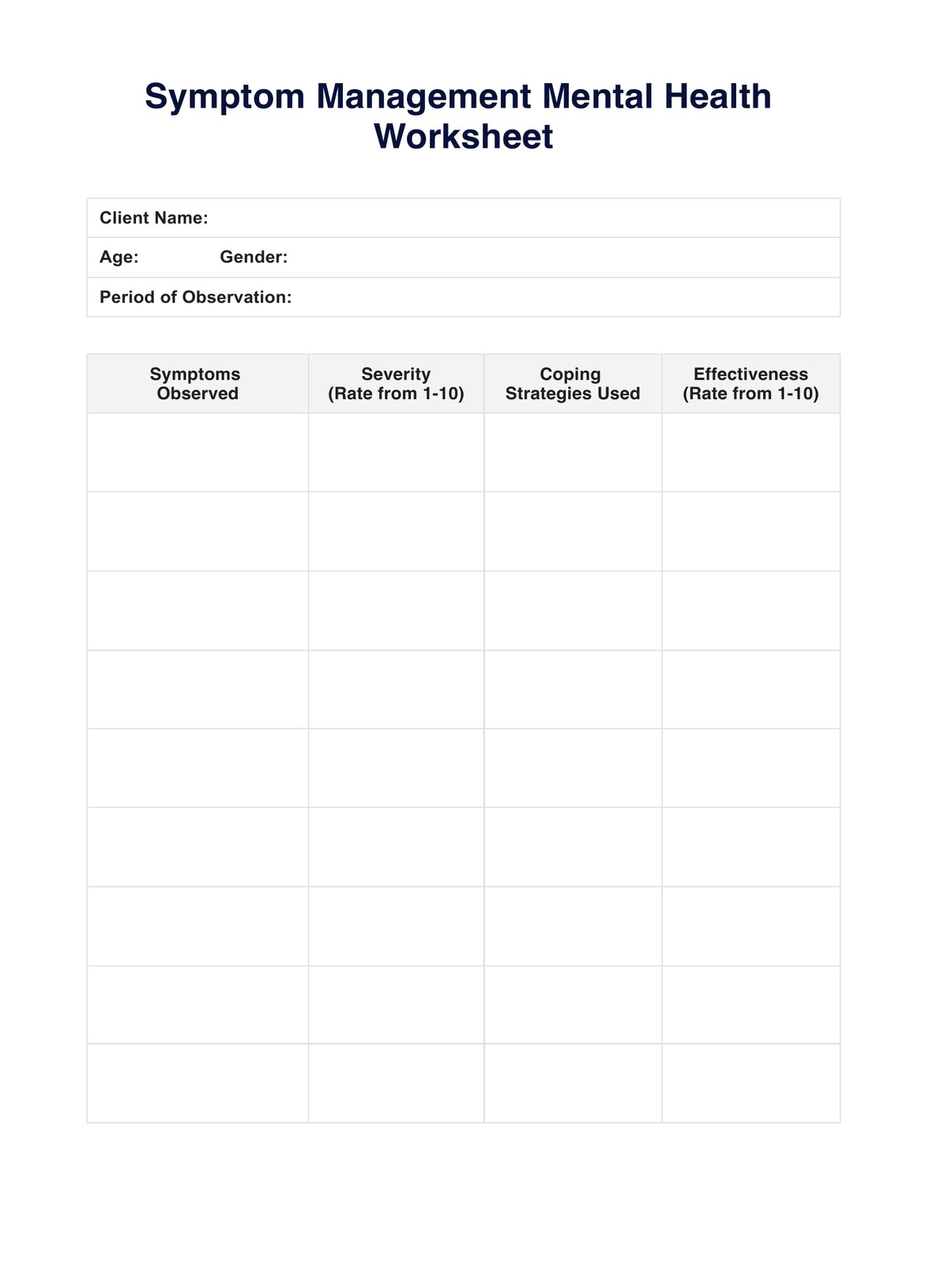
















-template.jpg)



















































































